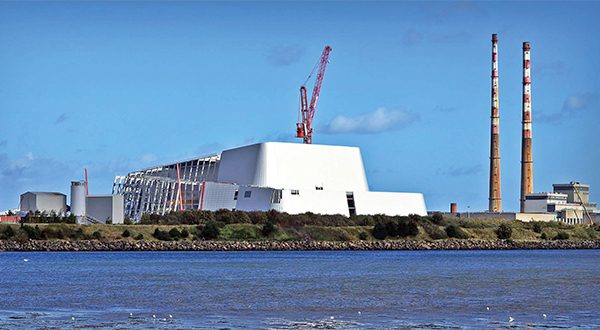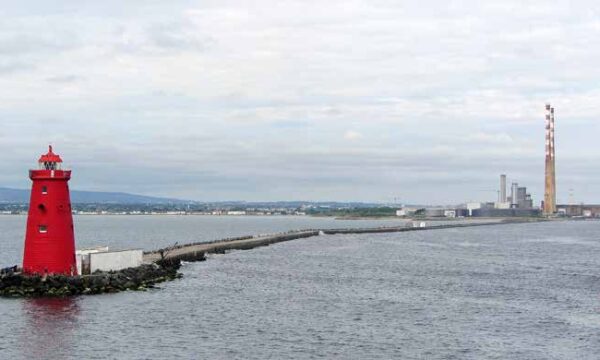
Pictured: Poolbeg incinerator.
A public meeting was held by the Social Democrats on October 27th with the aim of discussing emissions monitoring at the new Poolbeg incinerator, which is due to come into operation in 2017.
The aim of the meeting was to gather momentum and signatures for a petition known as: “A call to monitor emissions from the Poolbeg incinerator and public access to emission levels,” on Change.org.
The Social Democrats are aiming to acquire enough signatures to put their proposals to the Minister of the Environment, Denis Naughten, to request daily monitoring of the harmful emissions.
Social Democrats representative, Glenna Lynch, chaired the meeting. Main guest speaker at the event was Professor Anthony Staines, an epidemiologist, who has a long-standing record of submitting concerns to the planning tribunals regarding the incinerator at Poolbeg.
Prof. Staines was previously asked to do an epidemiological report on the health of Ringsend, where the incinerator is located. He found that Ringsend has a “vulnerable population” in epidemiological terms with high rates of cancer and heart disease, although he stated there had been some changes since he had carried out his report. At that time, Staines recommended that a Health Impact Assessment (HIA) be carried out on the effect that the incinerator would have on the local areas. Staines stated that with funding it was entirely possible to carry out this process. However, funding has never been allocated for such a HIA.
As a result of this failure to commission a HIA, there will be no bona fide method of measuring what the health effects of the incinerator would be on the people in the vicinity of the incinerator as there are no appropriate baseline studies.
Staines explained some of the health risks from the incinerator and why there was a need for monitoring. When the incinerator burns at its top temperature, most hazardous material is burnt and the impact on public health is minimal. However, if it is cooling down or heating up there is a health impact, as more hazardous waste is produced at these mid-point temperatures.
Concerns in the community regarding emissions levels of the incinerator have been a mainstay of anxiety about the health effects for people who live and work in the area.
Covanta, the company responsible for the building and operation of the incinerator, have been known to operate incinerator plants that have transgressed allowable emission limits – the latest at Durham-York, near Toronto, Canada. Within two years of operation it was found to be emitting 13 times the allowable dioxin levels and one of its burning chambers had to be shut down and investigated.
Subsequent to the meeting, the Social Democrats are seeking a baseline study to measure disease incidence in the local community. Data from such studies will help understand any changes in health among the local population after the incinerator begins to operate as planned next year.
According to Kieran Clarke of the Social Democrats, they aim to present this proposal to the EPA, DCC, Covanta and the Minister for the Environment. It is not clear that an appropriate HIA will be possible, given the tight timeline. The Social Democrats will make a further announcement on their progress this month.
By Kevin Mac Sharry



